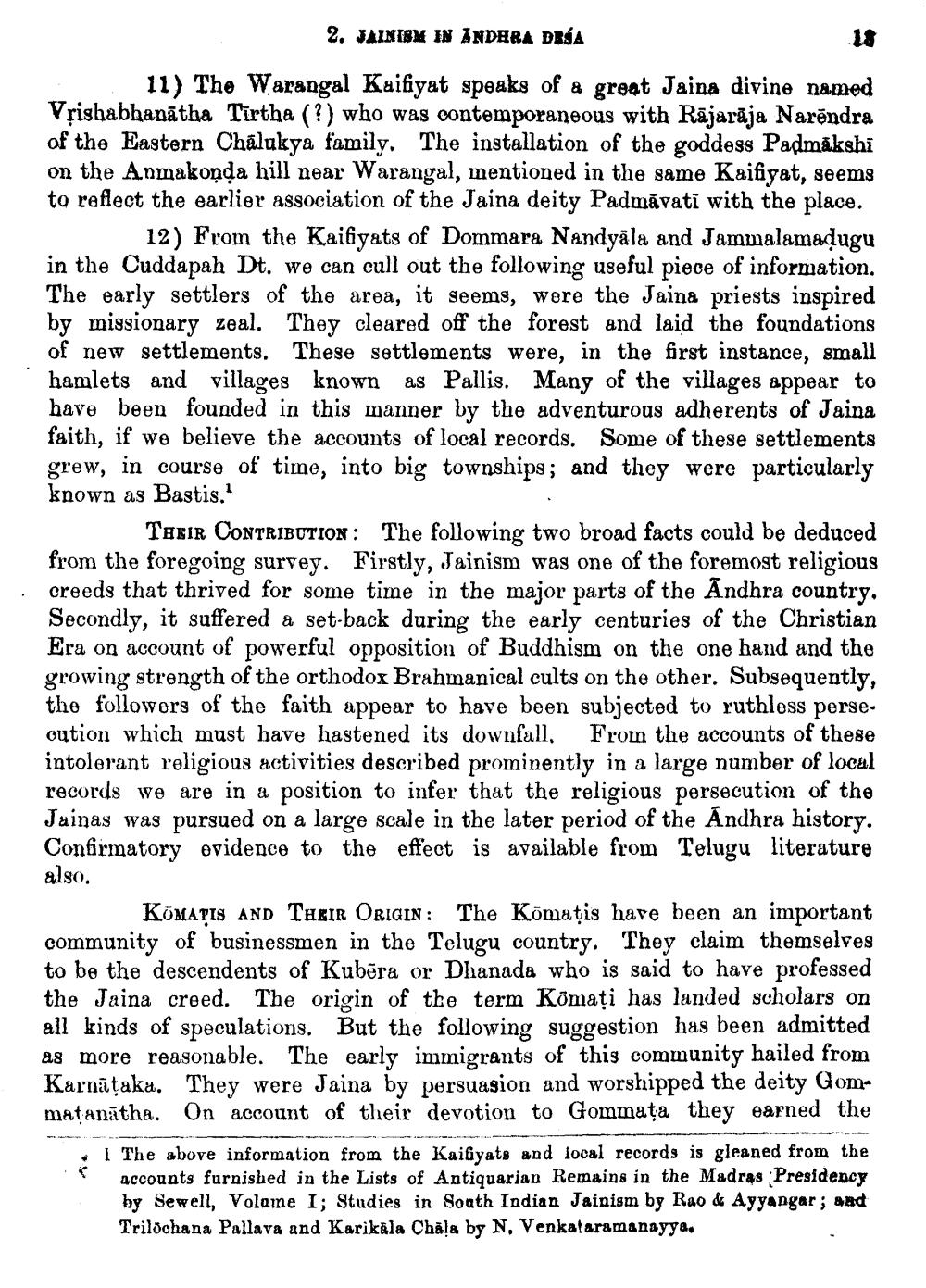________________
2. JAINISM IN ANDHRA DESA
18
11) The Warangal Kaifiyat speaks of a great Jaina divine named Vrishabhanatha Tirtha (?) who was contemporaneous with Rajarāja Narendra of the Eastern Chalukya family. The installation of the goddess Padmakshi on the Anmakonda hill near Warangal, mentioned in the same Kaifiyat, seems to reflect the earlier association of the Jaina deity Padmavati with the place. 12) From the Kaifiyats of Dommara Nandyala and Jammalamadugu in the Cuddapah Dt. we can cull out the following useful piece of information. The early settlers of the area, it seems, were the Jaina priests inspired by missionary zeal. They cleared off the forest and laid the foundations of new settlements. These settlements were, in the first instance, small hamlets and villages known as Pallis. Many of the villages appear to have been founded in this manner by the adventurous adherents of Jaina faith, if we believe the accounts of local records. Some of these settlements grew, in course of time, into big townships; and they were particularly known as Bastis.1
THEIR CONTRIBUTION: The following two broad facts could be deduced from the foregoing survey. Firstly, Jainism was one of the foremost religious creeds that thrived for some time in the major parts of the Andhra country. Secondly, it suffered a set-back during the early centuries of the Christian Era on account of powerful opposition of Buddhism on the one hand and the growing strength of the orthodox Brahmanical cults on the other. Subsequently, the followers of the faith appear to have been subjected to ruthless persecution which must have hastened its downfall. From the accounts of these intolerant religious activities described prominently in a large number of local records we are in a position to infer that the religious persecution of the Jainas was pursued on a large scale in the later period of the Andhra history. Confirmatory evidence to the effect is available from Telugu literature also.
KōMATIS AND THEIR ORIGIN: The Kōmatis have been an important community of businessmen in the Telugu country. They claim themselves to be the descendents of Kubera or Dhanada who is said to have professed the Jaina creed. The origin of the term Kōmati has landed scholars on all kinds of speculations. But the following suggestion has been admitted as more reasonable. The early immigrants of this community hailed from Karnataka. They were Jaina by persuasion and worshipped the deity Gom matanatha. On account of their devotion to Gommata they earned the
•
<
I The above information from the Kaifiyats and local records is gleaned from the accounts furnished in the Lists of Antiquarian Remains in the Madras Presidency by Sewell, Volame I; Studies in South Indian Jainism by Rao & Ayyangar; and Trilochana Pallava and Karikala Chala by N, Venkataramanayya.




